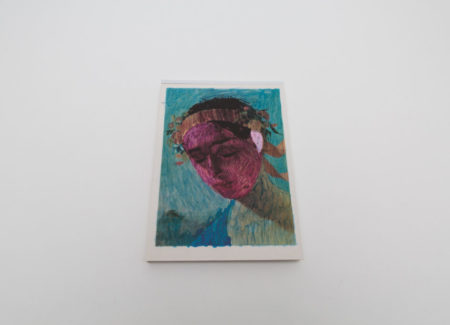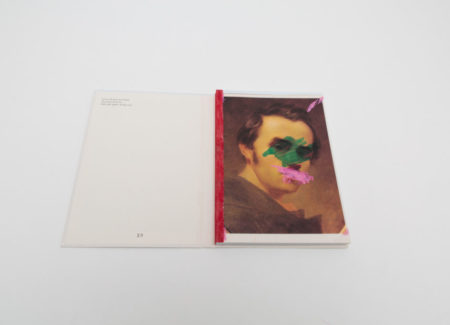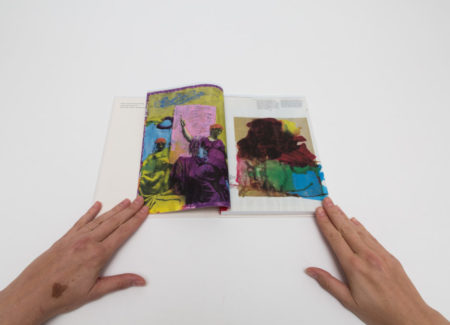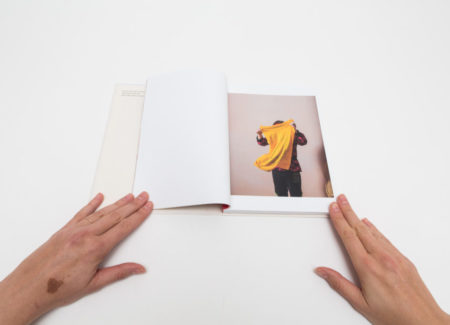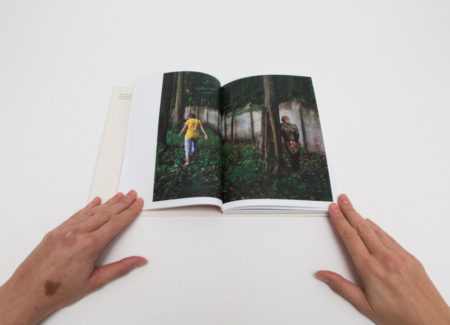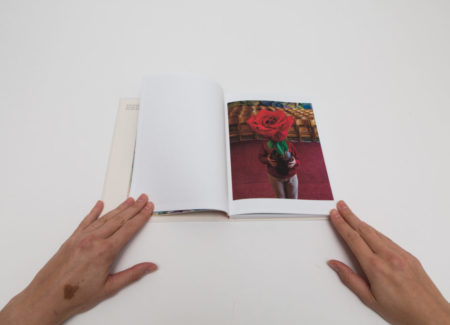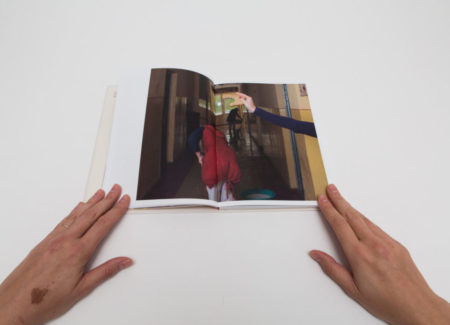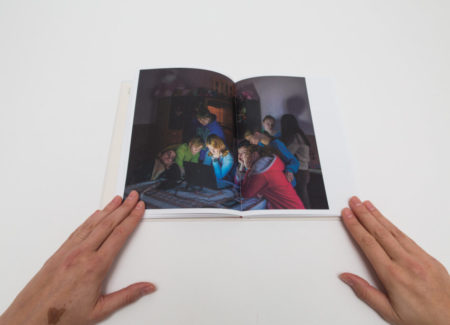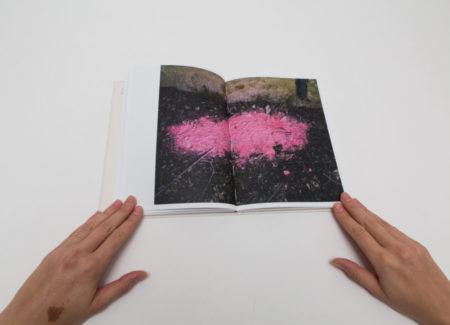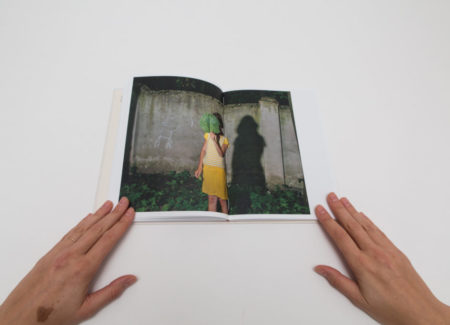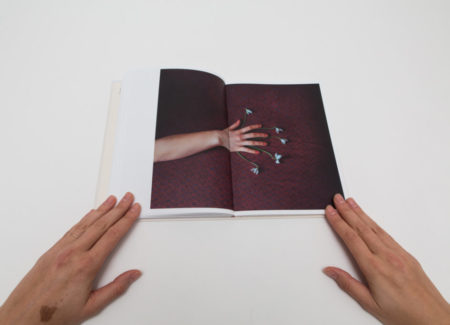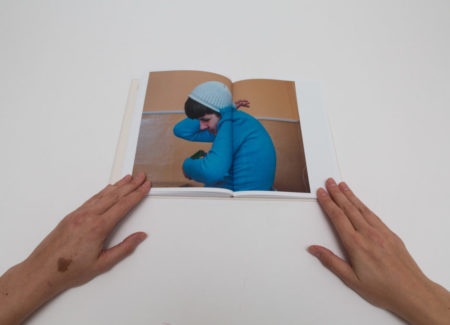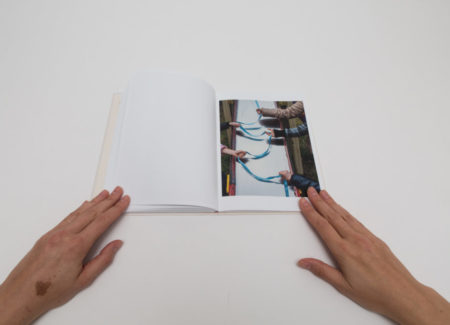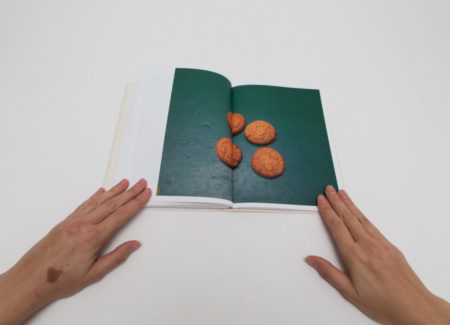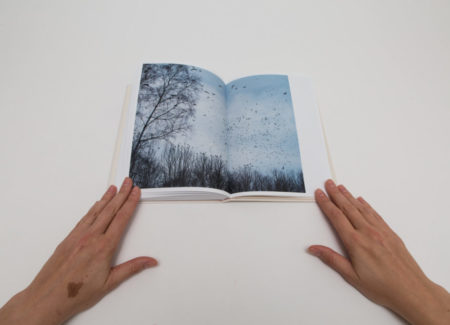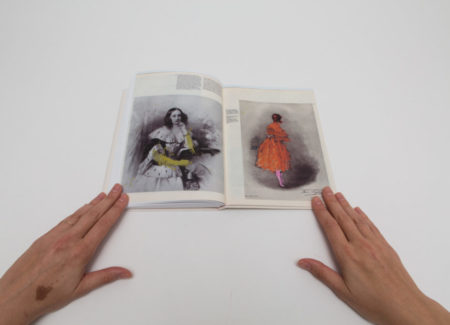JTF (just the facts): Self-published in 2017 (here). Hardcover, 122 pages, with 50 color photographs; with Swiss binding and a hand-colored spine. The artwork that opens and closes the book is made over the pages of a book about Taras Shevchenko. There are no texts or essays. In an edition of 500 copies. (Cover and spread shots below.)
Comments/Context: Carolyn Drake began her engagement with photography at the age of 30 and has spent most of the following years living and working abroad (in Ukraine, Turkey, China, and Central Asia). She works on involved, extended projects, dedicating several years to her research and documentation. Drake’s first project, entitled Two Rivers, offered a poetic look at the shifting borders and histories between two major rivers in Central Asia, the Amu Darya and Syr Darya. It was followed by Wild Pigeon which focused on a displaced community located in a remote Chinese province. Both projects were self-published as photobooks, and received high praise. She is the recipient of a Guggenheim fellowship, the Lange Taylor Prize, and Fulbright fellowship, among others, and she also became a nominee at Magnum Photos in 2015.
Drake’s new book Internat is a result of another long term project. It is an intimate and personal book about the girls from a children’s psychiatric facility in Western Ukraine (in Russian, the term for an orphanage is internat). Located in the suburbs of Ternopil, the internat is a home to about seventy women who are believed to be mentally unstable. They are allowed to stay at the facility until the age of thirty-five; all of them stay.
While the photographs in the book were taken in Ternopil between 2014 and 2016, Drake had been photographing in Ukraine for over a decade. Initially, she was interested in documenting the changing perceptions around gender roles in post-Soviet Europe. She first visited the facility in 2006, and when she came back 8 years later (after the Euromaidan Revolution), to her surprise the girls, many of them now grown up women, were still there. She then started visiting them every few months.
In Drake’s mind, it was essential to connect with the girls and engage them with her project. She invited them to paint and draw over the pages of a book about Taras Shevchenko, a prominent figure in Ukrainian history. These fantastical pages were then reproduced as the opening and closing pages of Drake’s book. The girls colored in some of the paintings (including the image of a young girl which forms the cover), drew extra details, and added some hand drawn text, adding elements of intimate connection and free collaboration to the project. In the photobook, these pages are printed on a thinner paper. The book itself has a Swiss binding (the cover is not attached to the face top edge) and the binding edge has a cloth lining hand colored red.
The photographs in the book immediately set Drake’s empathetic intention, showing that she was interested in a deeper understanding of the lives of these women, not just the direct documentation of the boarding school routine and its residents. The first photograph is an image of a girl next to a white wall captured as she shakes a yellow t-shirt that obscures her face and part of her body. The next spread depicts two close up portraits of another girl; her head is decorated with Christmas tinsel. In another picture, a girl holds a vase with an oversized decorative red rose that unexpectedly and completely covers her face. While we don’t see the girls’ faces in most of the photographs, there are a handful of portraits where they pose and look straight back in the camera. As the pages turn, Drake seems to establish more trusted relationships with her subjects – they slowly become more comfortable in her presence and let her into their intimate world.
Drake shows the girls as they play and dream, bringing forward their creative and free spirited personalities. Often, they are captured playing outside. One image shows two girls as they stand next to the wall, a rope made out of knotted scarves tossed over the side, their body language indicating anticipation. Drake’s rich color palette is essential to her visual narrative. Images of the school’s interior and its surroundings add a fairy tale atmosphere to the narrative, from a bright pink spot of chalky substance on grey leaf-strewn ground and paper airplanes in green grass to a dozen colorful flip flops set in a line inside the facility and a group of brown cookies on a green tabletop.
The last few photographs in the book show the forest and the brick wall that surrounds the facility, bringing back the stubborn reality of living within the closed institution. Internat is a poetic look at the cloistered lives of these women, capturing both the edges of their confined world and the simple tenderness they have built inside. It is the kind of project that requires patience and care, looking for sparks of vibrant life where others have assumed there are none.
Collector’s POV: Carolyn Drake is represented by Magnum Photos, where her prints are available in the Magnum Gallery (here). Her work has not yet found its way to the secondary markets, so gallery retail remains the best option for those collectors interested in following up.

